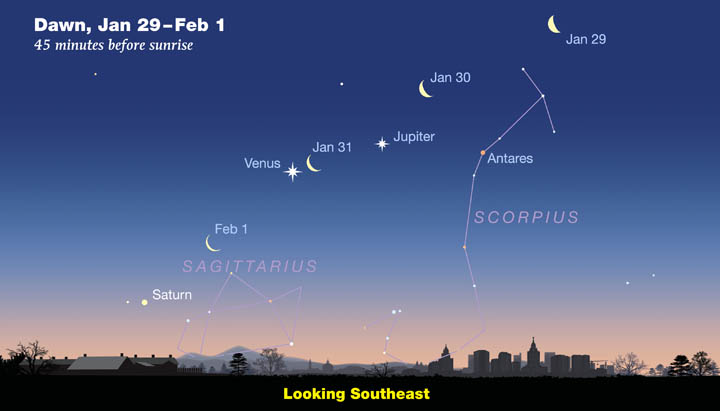As told in this month's astronomy podcast, a total lunar eclipse and the Quadrantid meteors headline a busy month of stargazing after sunset and before dawn.
LISTEN HERE:
Podcast: Play in new window | Download
Subscribe: Apple Podcasts | Google Podcasts | Spotify | Email | RSS | More
The new year begins with a celestial bang as the prolific but little-known Quadrantid meteor shower peaks on the night of January 3rd.

Sky & Telescope
Stay up long enough (or get up early enough), and you'll see Jupiter and Venus dance with a thin crescent Moon in the predawn sky. The Moon makes a return visit at month's end, pairing closely with Venus on January 31st.
Orion dominates the evening sky, climbing in the east as darkness falls and pointing the way (upward) toward celestial treats in Taurus:Aldebaran, the Hyades star cluster, and (higher up) the distinctive Pleiades (Seven Sisters) star cluster.
To the west (right) of Orion, search for a pair of dim, lesser-known constellations that together take up a lot of celestial real estate. Which two? You'll have to listen to January's astronomy podcast to learn the answer.
The month's biggest celestial event is a total eclipse of the Moon on the night of January 20–21, which will be visible all across the U.S. (and, in fact, from all of both North and South America. Tune in to our sky-tour podcast to get this event's key times and what to look for.
Sky & Telescope's informative, engaging tour of the night sky lets anyone — young or old, beginner or stargazing veteran — find out what to look for during January.
 0
0
Comments
You must be logged in to post a comment.